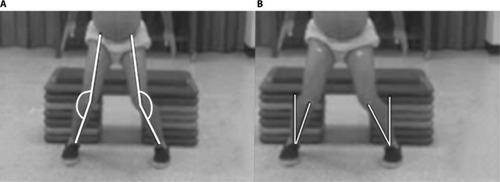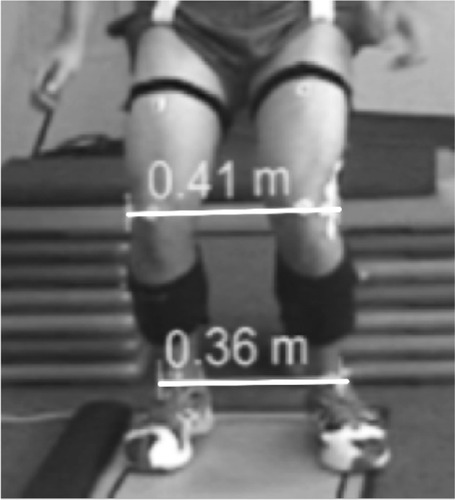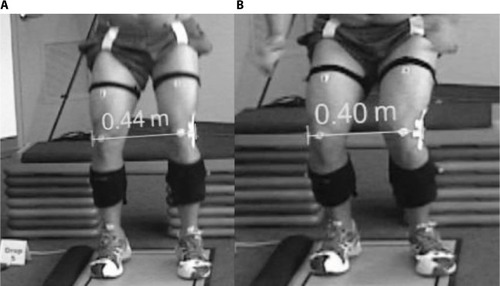Figures & data
Figure 1 Frontal plane projection angles.
Abbreviation: ASIS, anterior superior iliac spine.

Figure 2 KASR defined as the ratio of distance between lateral femoral epicondyles (knee) and lateral malleoli (ankle) (KASR = knee/ankle) during peak knee flexion.

Figure 3 KSD quantified as the distance (in meters) between the right and left lateral femoral epicondyle markers between initial contact phase (A) and peak knee flexion (B).

Table 1 Mean values for 2D and 3D variables during drop jumps
Table 2 Intrarater reliability of 2D FPPA, KASR, and KSD measures during drop jumps
Table 3 Interrater reliability for Dartfish™ measures and correlation between 2D and 3D FPPA, KASR, and KSD variables
